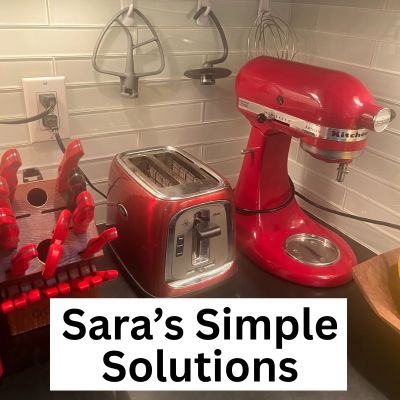Organizing Creative Spaces

This post is part of a series that I will be sharing with you over the next couple months, based on the 5 week journal that I’ve created. If you don’t want to wait for each post to come out, you can download the journal here: The Seattle Sparkle Method to Get Organized and Stay Organized
Even though I love organizing and being organized, I also love making messes. I am an artist at heart. I have my undergrad and graduate degrees in art, and I worked as a professional glassblower for many years. I think there is a real value in letting yourself make a mess when you’re doing a creative project. Allowing yourself to make a mess will help your brain make new connections and find unique solutions. It’s a great way to foster curiosity. If you don’t let yourself get messy (and make mistakes), you will feel inhibited, and you won’t feel fully fulfilled. Even if you don’t consider yourself to be a “creative” person, if you allow yourself to play creatively once in a while, it can bring a lot of joy into your life. However, it’s important to know where the point of diminishing return is. If you let yourself get too messy and you leave it that way for too long, it can be hard to reap the benefits of making the mess. It’s important to have a good organizing system so that you can find all your supplies and easily clean up after yourself. In this post, I will give you the instructions to create a fertile organized creative space.
While creativity can mean so many different things (visual art, dance, music, acting, etc.), this post will be geared towards arts and crafts supplies, since this is usually the type of creativity that usually needs the most organizational help.
Step 1: Identify your creative space. You may already have a space in mind, or you may need to create a good space to work in and store your supplies. Or you may want to just have a place where you store your supplies and another place where you create.
Step 2: Sort your stuff. You may need to clear out a space that’s filled with non-art related items that will either need to be rehomed to another location in your house, or given away. Or you may be purely sorting art-related materials. You’ll want to sort items into similar categories such as collecting all the tape together, the glue together, and the various types of paints (or whatever you have). Use temporary containers such as cardboard boxes or bags to help you sort like-items.
Step 3: Declutter. Once you’ve sorted your things together, it’s easier to see what you can let go of. Either throw out or donate anything that you don’t need or want anymore. Since many thrift stores don’t accept art supplies, you can either re-home them through Buy Nothing, or you can call local schools and camps to see if they are accepting donations. Be really honest with yourself about which in-progress projects you’re actually going to finish. There’s a lot to be said about the value of actually finishing projects, but there’s also relief in letting go of things that don’t interest you anymore. Make sure to not only clear spaces for your supplies, but declutter your work-area as well.
Step 4: Figure out where you’re going to store your supplies. Do you need to set up shelves, drawers, pegboards, or other organizing systems to store your stuff? And do you have a good workspace? Do you need a desk or table so that you can do your projects? Set these things up now.
Step 5: Containerize your things. Since you’ve used temporary containers for step 2, you may want to upgrade to containers that are more ideal for your needs. I’m a big fan of using clear containers, but I also love using decorative bins. Whichever type of containers you choose, I highly recommend using labels to help you remember what you’ve stored where.
Step 6: Maintain! Depending on how frequently you’re using your creative space, come up with a clean-up routine so that you can continue to use your space with ease.
Home Assignment
Declutter and organize your creative space, whatever that means to you. If you’re not already in the habit of picking up after yourself when you’re working on a project, think about at what interval you would ideally like to tidy up. Is it daily? Before you start working? After you work? Visualizing when it happens will help program your internal alarm to alert you so that you can make it happen. Tidy up your creative space. Assess your unfinished projects. What’s still in the works? When will they get done? What projects can you let go of?
Life Assignment
How do you like to express your creativity? Is there something you’d like to try? Make some progress in the creativity department today. Do a quick doodle, sign up for a class, take a photo, write a poem, sing a song, do a dance. Get your creative juices flowing in whatever way makes your heart sing! Self-expression can be very challenging for some, and very easy for others. Have fun with it, but get out of your comfort zone, even if it’s just a little.

Posted By Jean Prominski, Certified Professional Organizer
- Follow me on Instagram @seattlesparkle
- Join my Facebook Group, Declutter and Organize with Seattle Sparkle.
- Ready to book a consultation? Complete this form.
- Download my free 5 week journal The Seattle Sparkle Method to Get Organized and Stay Organized
- Check out my media exposure: Seattle Sparkle in the Media
- For artwork to energize your home, order through jeanprominski.com.




